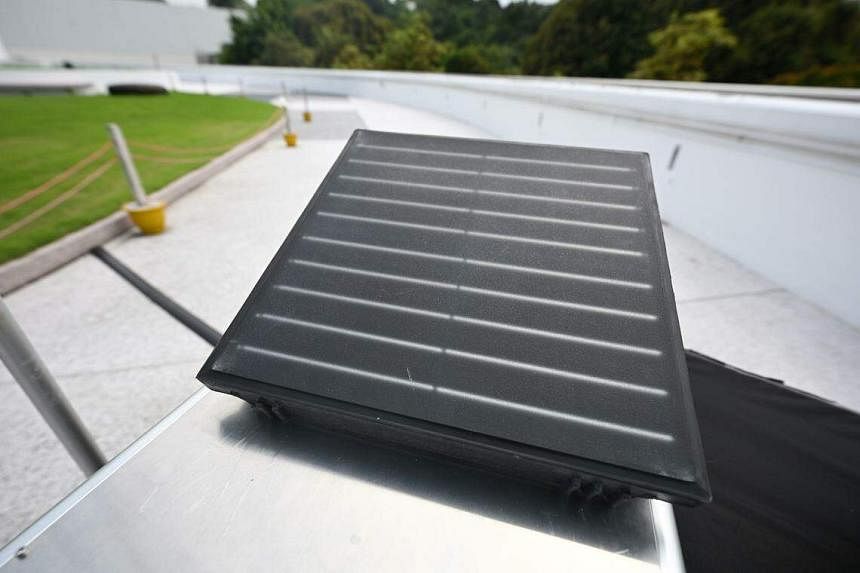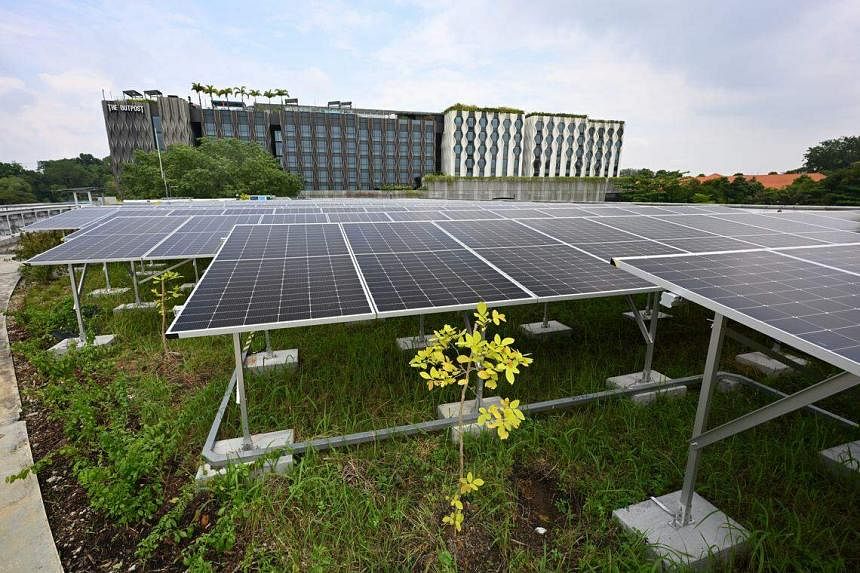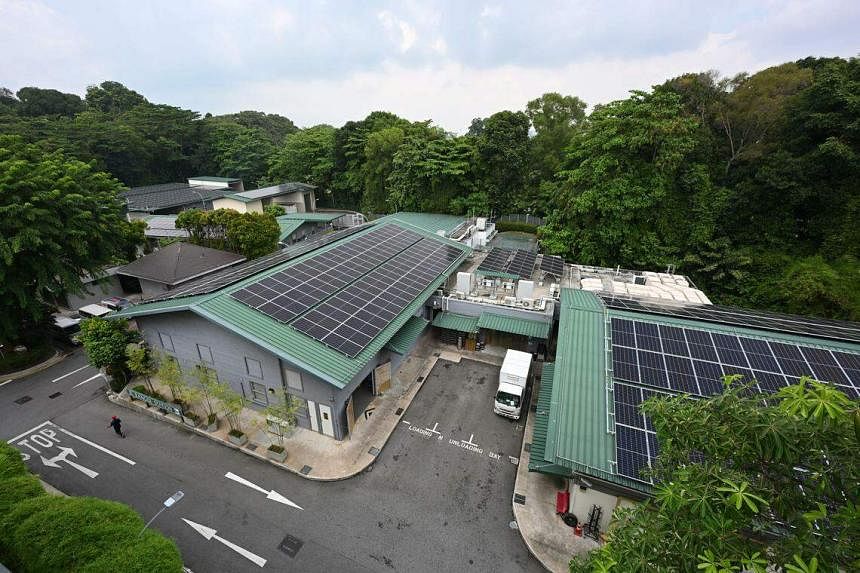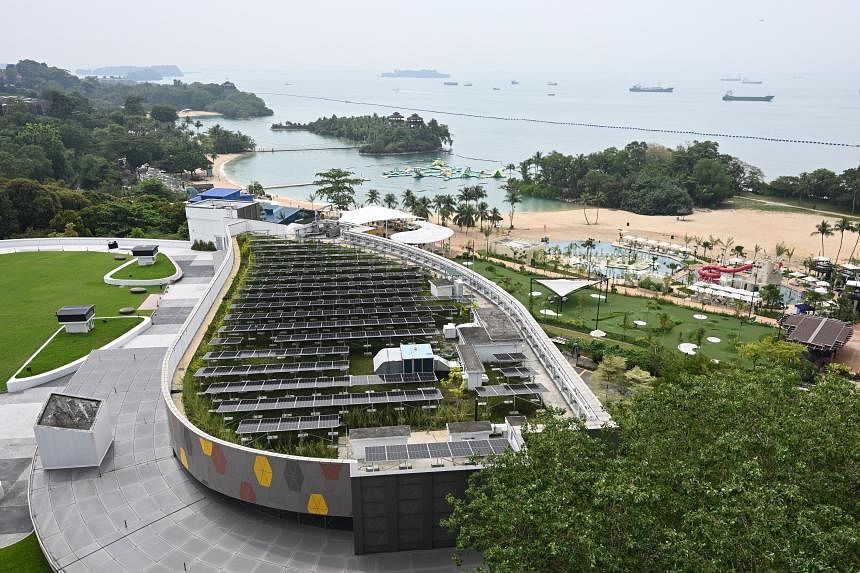SINGAPORE – The first “solar pavements” in the Republic will be installed on Sentosa’s Fort Siloso Skywalk in the first quarter of 2024, as part of the island’s efforts to achieve carbon neutrality while it explores new ways to harness the power of the sun.
Solar pavements are essentially solar panels installed on pavements that pedestrians can walk on.
The Sentosa Development Corporation (SDC) has been aggressively rolling out the use of solar panels. It achieved over 5.2 megawatt-peak solar capacity in 2023, surpassing its original 3 megawatt-peak solar capacity target by about 68 per cent.
The island has other plans to help it achieve carbon neutrality by 2030.
Speaking to reporters at Palawan Kidz City on Sentosa Island on Tuesday, Mr Lee Cheh Hsien, SDC’s divisional director for planning, said that ramping up the use of solar energy is one of the many ways in which Sentosa is actively decarbonising.
Other efforts include improving the energy efficiency in all its buildings and its waste management.
SDC is actively collaborating with its island partners for its solar panel roll-out.
They are Mount Faber Leisure Group, Resorts World Sentosa, Capella Singapore, One Degree 15 Marina Sentosa Cove, and Big Tiny, which operates the Tiny Away Escape @ Lazarus Island.
Solar panels have been installed in 46 locations on the island under these businesses.

When asked to what extent solar energy will be part of the energy mix come 2030, Mr Lee said SDC will give more quantitative updates progressively.
With over 5.2 megawatt-peak of solar capacity already installed, close to 6.6 gigawatt hours (Gwh) of clean energy can be produced annually.
This has the potential to reduce more than 2,600 tonnes of carbon dioxide per year, an amount that is equivalent to the carbon emissions generated by 97,700 hotel room nights, said SDC.
Solar capacity measures how much solar energy could be produced in optimal conditions, whereas the total energy yield depends on factors such as the amount of sunlight, orientation of the panel, and the presence of shading.

SDC is engaging more businesses to come on board its solarisation journey, including the hotel Amara Sanctuary Resort and FOC Sentosa, a restaurant and beach club.
By 2025, SDC hopes to have a solar capacity of more than 6 megawatt-peak, which could generate an annual yield of more than 7 Gwh of clean energy.
The trial of solar panels on Fort Siloso Skywalk should help the SDC assess the viability of using pedestrian walkways to generate solar energy.
Mr Lee said the pilot will also take into consideration feedback from members of the public, and how the solar panels are being maintained, for instance.
“This will give us insight into the lifecycle costs (of the panels) as well efficiency of the solar panels so that we can make more informed decisions about how to deploy the panels, and if viable, how to scale them up,” Mr Lee told reporters on Tuesday.
Solar pavements and roads deployed overseas have had other issues, such as the accumulation of dirt and dust on the panels, which reduce their overall efficiency rates.
Asked why the Fort Siloso Skywalk was chosen, an SDC spokesman said: “Fort Siloso Skywalk is a well-loved attraction frequented by visitors, and the pavement allows us to showcase how the technology can serve the dual purpose of a walkway (and) also power generation.”
As the skywalk connects the Siloso Skywalk lift and the main Fort Siloso site, the panels could potentially power infrastructure within the vicinity, if the pilot is deemed feasible.

The solar panels were developed by local green energy supplier Raitan, a winner in the 2022 Sustainability Open Innovation Challenge – a competition organised by Enterprise Singapore to devise sustainability solutions to tackle a range of problems spanning several sectors.
To improve the efficiency of solar panels, SDC is testing whether having vegetation beneath them can help to cool them down, reducing over-heating and thus improving the panels’ output and performance life.
From 2026, Sentosa plans to venture into offsite solar panel opportunities by deploying floating solar panels.


